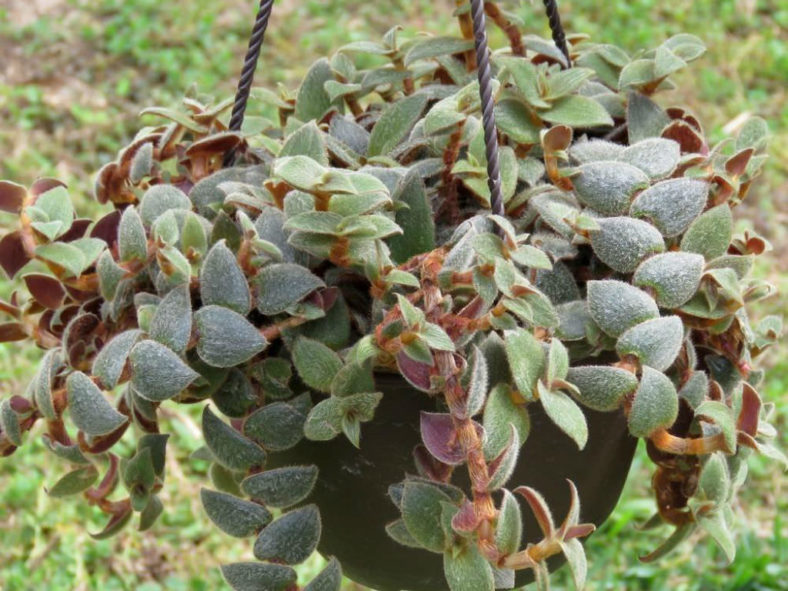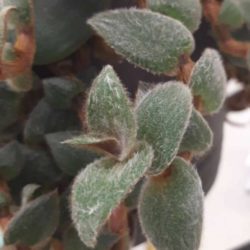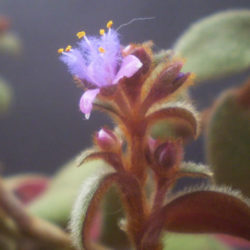Scientific Name
Cyanotis beddomei (Hook.f.) Erhardt, Götz & Seybold
Common Name(s)
Teddy Bear Vine, Teddchysar Plant
Synonym(s)
Cyanotis kewensis, Erythrotis beddomei, Tonningia kewensis
Scientific Classification
Family: Commelinaceae
Subfamily: Commelinoideae
Tribe: Tradescantieae
Genus: Cyanotis
Description
Cyanotis beddomei is a creeping succulent-like plant with stems covered with soft brownish hair and fleshy, lance-shaped leaves arranged in 2 rows along the stem. The leaves are olive green, red beneath, covered with short, white hairs, and have entire, reddish-purple, hairy margins. They measure up to 2 inches (5 cm) long and 1 inch (2.5 cm) wide and have up to 0.4 inches (1 cm) long sheaths that cover most of the stem.
The flowers are small, have three pinkish-purple petals and long stamens with long blue hairs, and appear in clusters in summer.
Origin
Cyanotis beddomei is native to India. It occurs in South Western Ghats montane rain forests in Kerala and Tamil Nadu.

Hardiness
USDA hardiness zone 10a to 11b: from 30 °F (−1.1 °C) to 50 °F (+10 °C).
How to Grow and Care
A relatively small plant, ideal on its own or in terrariums or indoor fairy gardens. Because it has a creeping or trailing habit, this plant is excellent for hanging planters or tall containers. You can also grow it in a low, shallow pot and let it grow horizontally on a tabletop, mantle, desk, or other surfaces to great effect.
Grow Pussy Ears in a bright spot for the happiest plant. It likes high light but tolerates medium light. When Pussy Ears doesn't get enough light, it can get leggy, with long stems between the leaves.
If your plant grows too large or becomes too leggy, you can prune Pussy Ears without hurting it. Cut it back at any time of year. By cutting it back, you will encourage Pussy Ears to become a fuller or bushier plant.
Water Pussy Ears when the top inch (2.5 cm) or so of the potting mix is dry. Take care not to let the potting mix stay wet or soggy for extended periods. If the roots stay too wet, this plant can rot.
If you wish to fertilize your Pussy Ears plant, you can do so in spring and summer. Let the plant rest during the cooler, darker fall and winter months. You can use any general-purpose houseplant fertilizer. Just be sure to follow the directions on the product packaging. Brands formulate their fertilizers differently, so application rates and frequencies vary.
Links
- Back to genus Cyanotis
- Succupedia: Browse succulents by Scientific Name, Common Name, Genus, Family, USDA Hardiness Zone, Origin, or cacti by Genus
Photo Gallery
Click on a photo to see a larger version.


